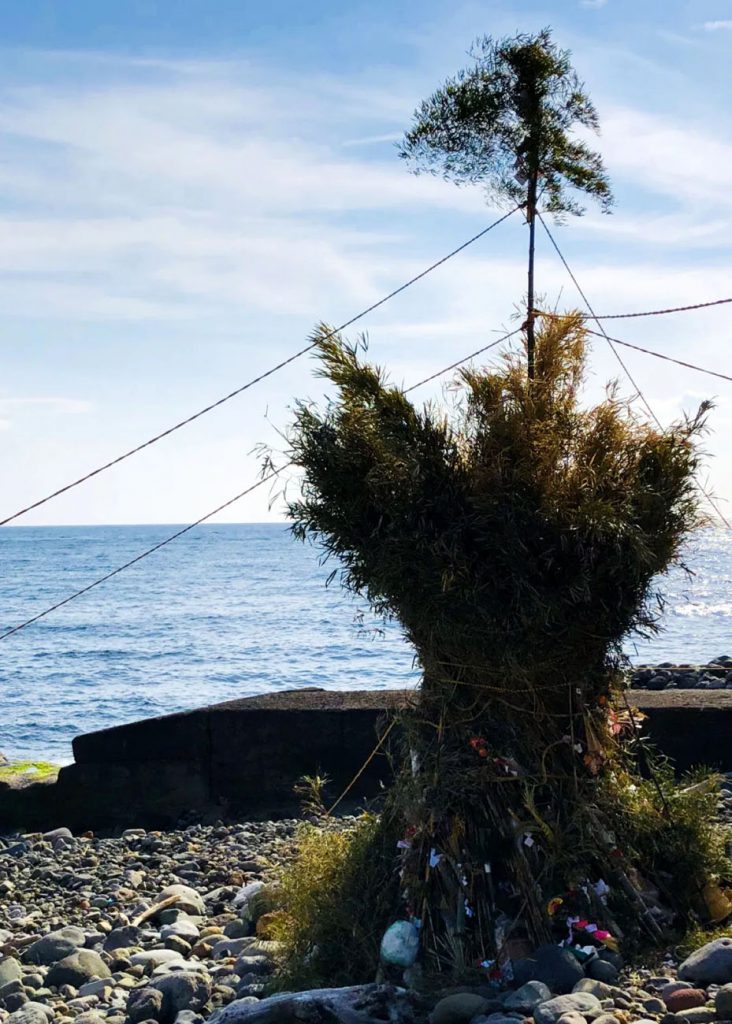
January 15th is called Ko-Shogatsu(the First Full Moon Festival), and there is an event called “Dondoyaki” where you bring the Kadomatsu and Shimenawa that were displayed in the New Year and the first written papers of the year and burn them off. It is said to have originated in ancient Izumo, and now it has spread all over Japan and is called by various names. Since this day overlaps with the Seijin-no-hi(the coming-of-age ceremony day), it was held according to it, but after the Seijin-no-hi changed to the second Monday of January, there are many places where Dondoyali is also done on that day or the day before. Obon in August is a Buddhist event, while Ko-Shogatsu and “Dondoyaki” are Shinto events. It has the meaning of sending the Saishin(visiting god) who was greeted on New Year’s Day. There is a custom of baking the Okagami(big rice kakes like a mirror) in the “Dondoyaki”, and I remember eating delicious Yaki-imo(roasted sweet potatoes) by Dondoyaki.
1月15日は小正月といい、新年に飾った門松やしめ縄、そして書初めなどを持ち寄って焼き払う「どんど焼き」と行事があります。発祥は古代出雲からと言われていますが、今では日本全国に広がり、様々な呼び名で呼ばれています。ちょうどこの日が成人式の日に重なるのでそれに合わせて行われていましたが、成人式の日が1月の第二月曜日に変わってからは、どんど焼きもその日か前日に行われる所が多くなりました。8月のお盆が仏教行事に対して、小正月および「どんど焼き」は神道行事です。お正月にお迎えした歳神(来訪神)をお送りすると言う意味合いがあります。「どんど焼き」でお鏡を焼く風習がありますが、サツマイモを入れて美味しい焼き芋を食べた記憶があります。
